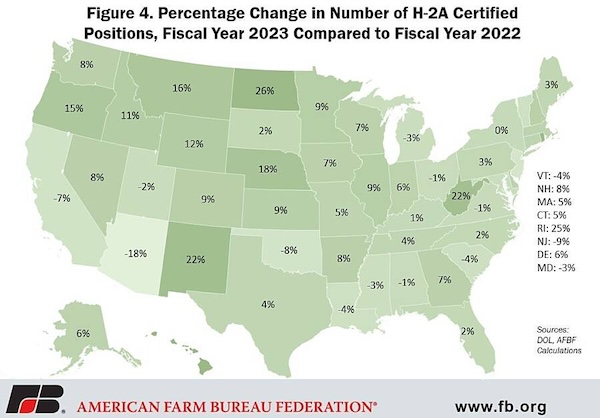American farmers have limited options when it comes to filling their labor needs. For many, the government’s H-2A visa program, which permits US farms to hire foreign seasonal workers, is a much-needed resource. However, the program is famously hard to navigate, with complicated rules and mountains of paperwork that just add to farmers’ already heavy workloads. A company called “SESO” has been helping farmers navigate the system for about five years now, as well as managing a slew of other human resource-related tasks.
Michael Guirgius says he co-founded SESO with Jordan Taylor in 2019 to address the farm labor shortage problem in the US. Guirguis has seen firsthand what a lack of farm labor can do to an operation. His cousin, Marsha Habib, is a farmer in Hollister, CA, who struggles every season to find enough workers to help harvest her crops.
Habib turned to her cousin a few years ago for advice on utilizing the H-2A program so she could expand her organic farm. Guirguis, who has a background in labor policy and economics, thought he was well-equipped to help. However, what he found was a mess of complicated regulations bogged down by paperwork that was a minefield for potentially costly mistakes.
Guirguis describes the system as broken and “so complicated, it was never meant to succeed.” According to Guirguis, the program requires you to work with four or five different government agencies. Mistakes in the visa application process have resulted in late arrivals of workers and ultimately billions of dollars worth of wasted crops. Around 72% of farms report delayed arrivals for their H-2A workers.
Unraveling the complicated H-2A program sparked the idea for SESO, which automates the H-2A visa process and helps farmers stay compliant. After talking to farmers, Guirguis also realized that most were ill-equipped to deal with a host of human resource tasks.
“When it comes to the back office, every farm we visited had thousands of filing cabinets,” Guirguis told TechCrunch in a recent interview. He says this “eye-opening” moment made him realize that SESO could address both the farm labor shortage and build an end-to-end modern operating system to streamline and modernize a lot of complex HR tasks.
SESO has since been steadily growing the number of farms that utilize its back-office software. The company doubled its customer base in 2023 and works with 27 of the largest 100 agriculture employers in the US. SESO also recently closed a $26 million Series B funding round, which included investment from several of its customers.
One of the company’s new investors is Index Ventures, which was inspired by Guirguis’s focus on getting feedback from farmers. Nina Achadjian, a partner at Index Ventures, talked to one customer who described previous pitches from Silicon Valley entrepreneurs that “show up at your farm and they are like, ‘Here is how you should run their business.’” The farmer says he always asks them to spend a day working alongside him so they can truly understand what his workday is like. “Michael was the only one who showed up at 4 a.m. in the freezing cold, in the dark, to pick artichokes.’”
Based on customer feedback, SESO is now expanding to add automated payroll. Guirguis said due to various agriculture employment laws, farm payroll is incredibly complicated. The company says the payroll solution will utilize artificial intelligence and include a banking and remittance solution for farm workers. “Generative AI is going to make a 50-hour payroll reconciliation process take under 5 minutes and will remove the reliance on paper checks and manual data entry for the back-office team,” explains Jordan Taylor, SESO co-founder and Head of Product.
Since 1986 when the government began allowing for an uncapped number of temporary agricultural workers, use of the H-2A program has skyrocketed. According to data cited by the American Farm Bureau Federation (AFBF), the number of certified H2A positions in 2023 increased +2% year-over-year. They note that while last year’s growth was slower than in years past, the number of H2A positions is still up +100,000 workers from 2020 levels.
Farm Bureau also points out that H2A usage varies widely by state. Last year, more than 10 states and territories had double-digit growth rates compared to 2022. Overall, the number of certified positions increased in 37 states and decreased in 14 of the 51 states and territories. Learn more about SESO HERE. (Sources: TechCrunch, AFBF, Forbes)










